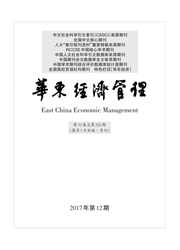

 中文摘要:
中文摘要:
金融二元结构的存在是金融管制的必然结果,即正规金融与非正规金融并存。为了研究非正规金融对货币政策有效性的影响,首先利用改进的?值法估测出1994-2012年非正规金融的规模,结果显示,近几年,其已占正规金融规模的1/3左右。在此基础上,利用多种实证计量方法重点分析了非正规金融与货币政策有效性的关系,结果表明:非正规金融与作为货币政策中介目标的货币供给量M2存在长期稳定的协整关系,而且是促进M2扩张的Granger原因;同时,正规金融、货币当局债券发行与其国外资产均对货币供给量M2产生不同程度的影响。金融二元结构的存在造成中央银行无法精确观测和调控货币供给总量,削弱了央行货币政策制定和实施的效果。
 英文摘要:
英文摘要:
The existence of financial dual structure is the inevitable result of financial regulation, namely the formal finance and non-formal finance coexist. In order to study the impact of non-formal finance on the effectiveness of monetary policy, the paper estimates the scale of the non-formal finance from the year of 1994 to 2012 by applying the improved method of?-value. The results show that the non-formal finance scale accounts for about one third of the formal financial scale in re-cent years. And on this basis, the paper focuses on analyzing the relationship between the non-formal finance and the effec-tiveness of monetary policy by using different empirical measurement methods. The results show that the non-formal finance and the broad money supply (M2) as an intermediate target of monetary policy exist a long-term stable cointegration relation-ship, it is also the Granger cause of the expansion of M2. Meanwhile, the formal finance, the bonds issued by the monetary authorities and their foreign assets also have different degrees of impact on M2. The existence of financial dual structure causes the central bank is unable to observe and control the total money supply accurately, weakening the results of the cen-tral bank’s monetary policy.
 同期刊论文项目
同期刊论文项目
 同项目期刊论文
同项目期刊论文
 期刊信息
期刊信息
